The heather season has not yet ended at the beginning of September (2021), so I am hiking another part of the Migration birds trail in the Netherlands. I travel to Baarn and have several options for the finish line: Hollandsche Rading, Lage Vuursche or perhaps Soesterberg. As you can see from the title, it has become Hollandsche Rading. On the way, I have been busy photographing the many mushrooms, heather and other flora and fauna. So the hike is not very long this time.
Baarnse forest and Hooge Vuursche
I walk towards the trail via an approach track from Baarn station. I pass through a lovely little park with some nice bridges. The bridges seem to come from the Efteling (fairy tale amusement park in the Netherlands). Is this a good prelude to a fairytale-like hike?


I cross the train tracks and walk along the cycle path past some flats and houses. I would love to live there, at the edge of the forest. I have reached the footbridge of the previous time. I have to stay on this side of the track and immediately go straight ahead into a forest path. Not much later, the path bends to the left and I leave the train track behind me.


I see all sorts of things flying around me, but of course the birds are difficult to recognise or photograph. I do think I recognise a marsh tit. This one looks suspiciously like a willow tit, of which I made an illustration earlier. An illustration of a marsh tit would be a bit unnecessary.
The marsh tit is grey-brown in colour with a black cap and a white face. It differs from the willow tit because, as the name suggests, it has a more glossy head. In Dutch this bird is called a glossy head tit, and the willow tit translates to matt head tit.
It also has a smaller chin patch and no light stripe on the arm wings compared to the willow tit. It is mostly found in forests, especially with lots of beech trees.
The marsh tit starts nesting from mid-April and lays a maximum of two nests a year, with 5 to up to 11 eggs per nest.
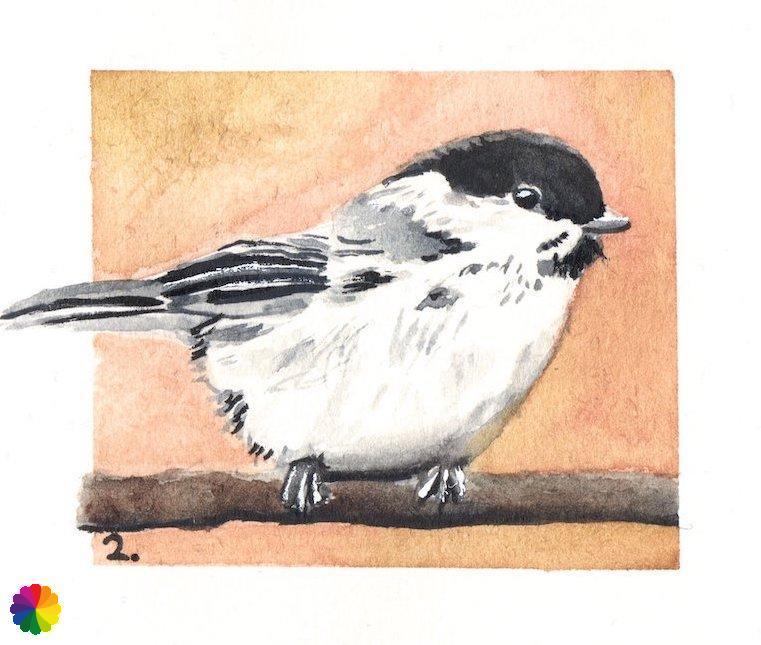
This illustration is of a willow tit, but he looks a lot like the marsh tit.
Source (in Dutch): Vogelbescherming
In the forest, I come across an occasional shrub of heather. A little later, there is a clearing in the forest; there is the Forest pool with orange roof tiles.




I turn left and walk along broad beech lanes. I am now in Hooge Vuursche by the looks of the signs. The sun is shining through the trees, leaving behind wonderful rainbow sun harps.



Delayed by mushrooms
I cross the Hilversumsestraatweg. From here, I come across one mushroom after another. My camera is working overtime. I don’t think I can make it to Soesterberg like this. Shall I stop in Lage Vuursche after all?


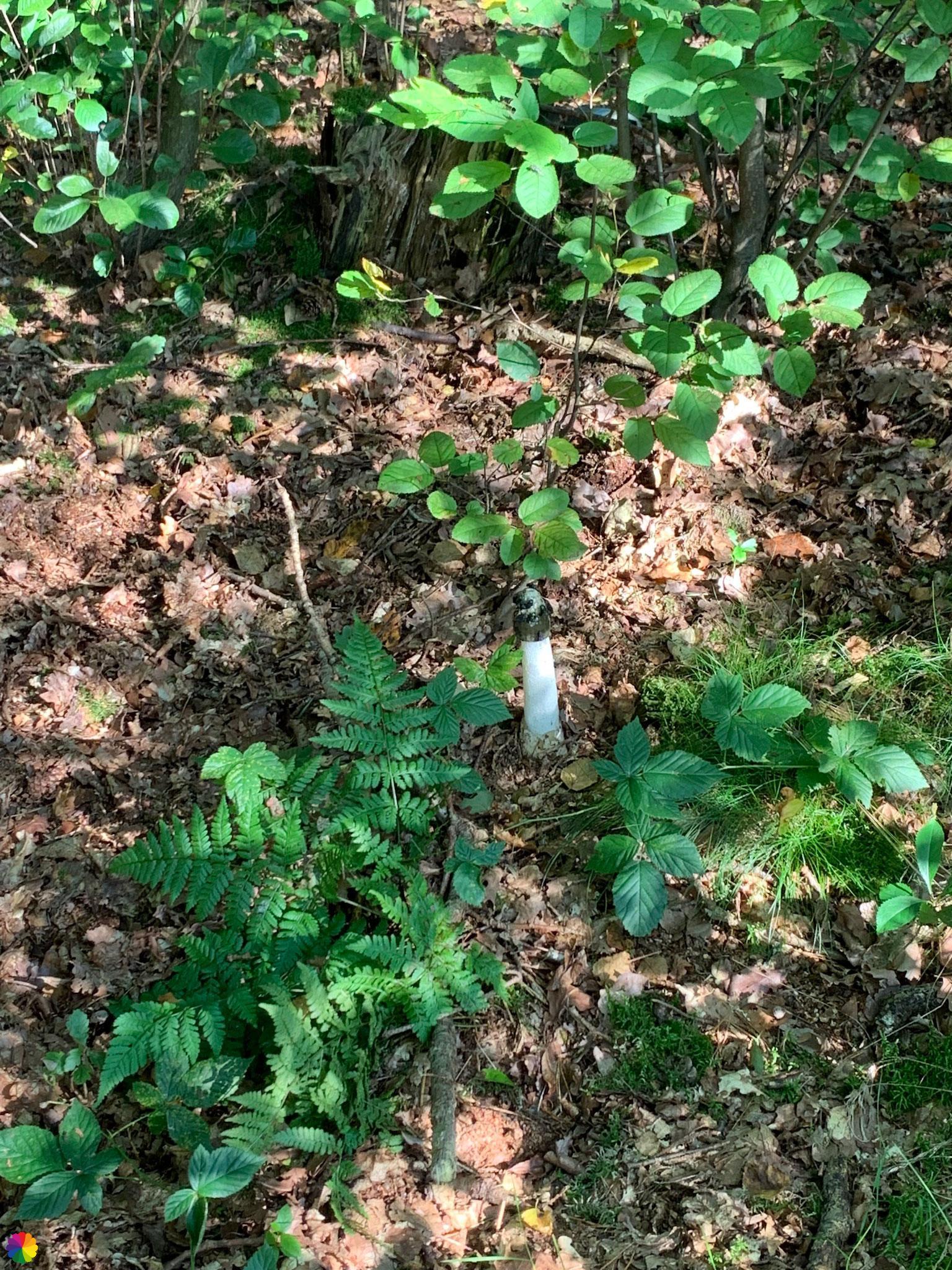





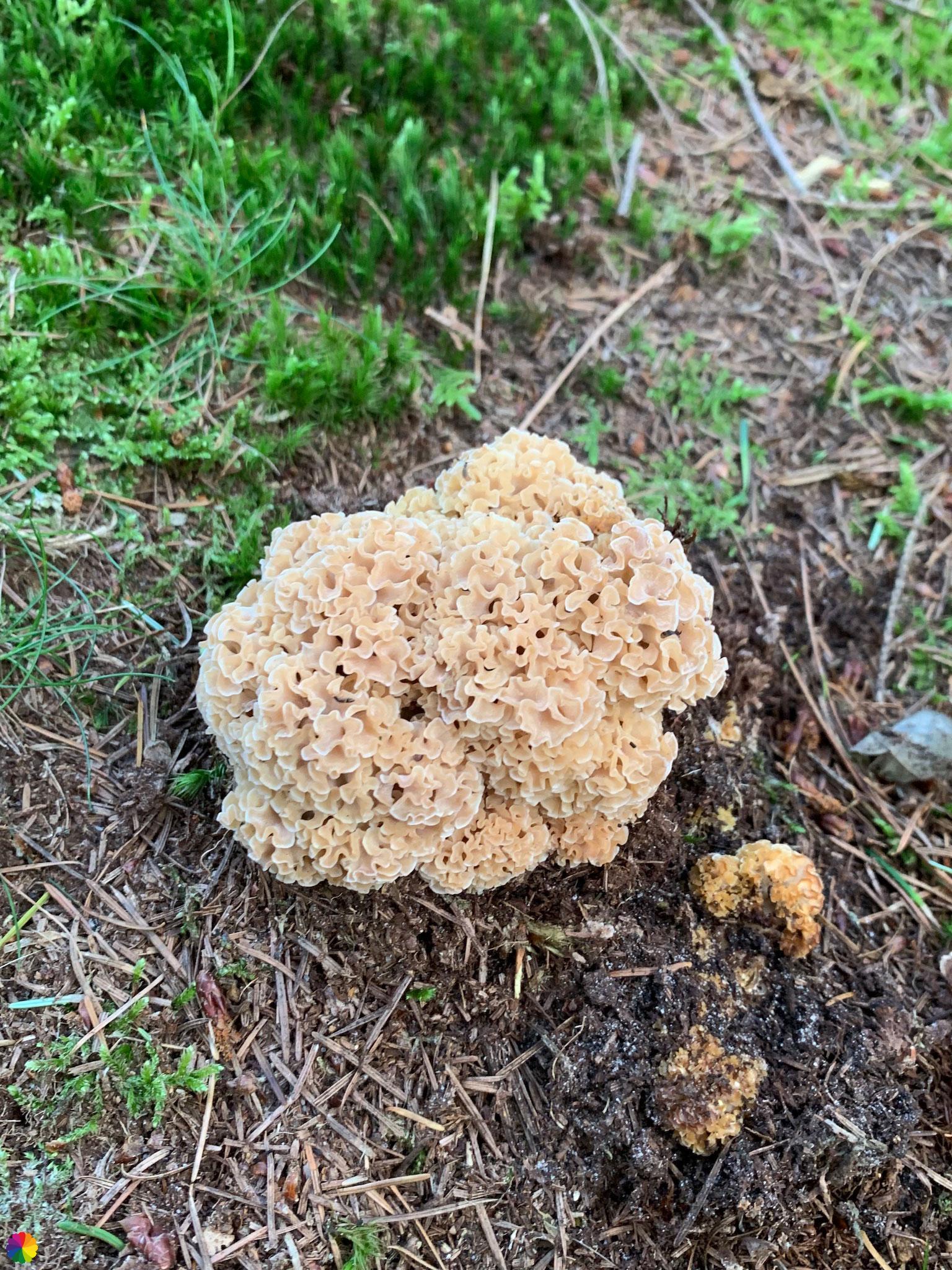
I pass a camping ground and take a break along the fence of the grounds in the absence of benches. On the other side of the path, a robin is busy singing. Very nice, to be serenaded. By the way, I see a lot of robins today. And, as usual in the woods, many great tits. Unfortunately, there are few other birds. Below is the checklist of birds I encountered on this hike.
| Birds seen between Baarn and Hollandsche Rading | |||
|---|---|---|---|
| ✔ Carrion crow | ✔ Eurasian jay | ✔ Great spotted woodpecker | |
| ✔ Common blackbird | ✔ Eurasian nuthatch | ✔ Great tit | |
| ✔ Common chiffchaff | ✔ Eurasian wren | ✔ House martin | |
| ✔ Common wood pigeon | ✔ European robin | ✔ Marsh tit | |
A little after the camping ground, I see a bench after all. I’m going to sit down anyway to enjoy the surroundings. You can’t make me happier than with being in the forest. But before I sit down, I see a small branch moving across the bench. It is a caterpillar! I make a video of it, because it walks in a harmonica motion over the bench. The caterpillar turns out to be a feathered thorn.
The feathered thorn is a 19-23 mm moth, which is very common in the Netherlands. The male is orange-brown of colour and the female more grey-brown. The caterpillar is grey and brown, sometimes with ocher or yellow spots, the head is reddish brown.
It owes its name to the antennae (feathered) of the male butterfly and to the way in which the caterpillar moves (in Dutch it translates to stretcher). For the English name I would say, the caterpillar kind of looks like a thorn for camouflage.

Source (in Dutch): Vlinderstichting
After the encounter with the caterpillar, I continue the trail. I turn left, still past the camping ground. Here too, I photograph a number of mushrooms and various kinds of moss.




I turn right again and now walk along a wide sandy path parallel to a cycle path. Here are some more open spots in the forest. The sun shines on the spruce trees. I come across some more bits of heather. I see a bird of prey flying in the distance, but I have no idea what species it is.

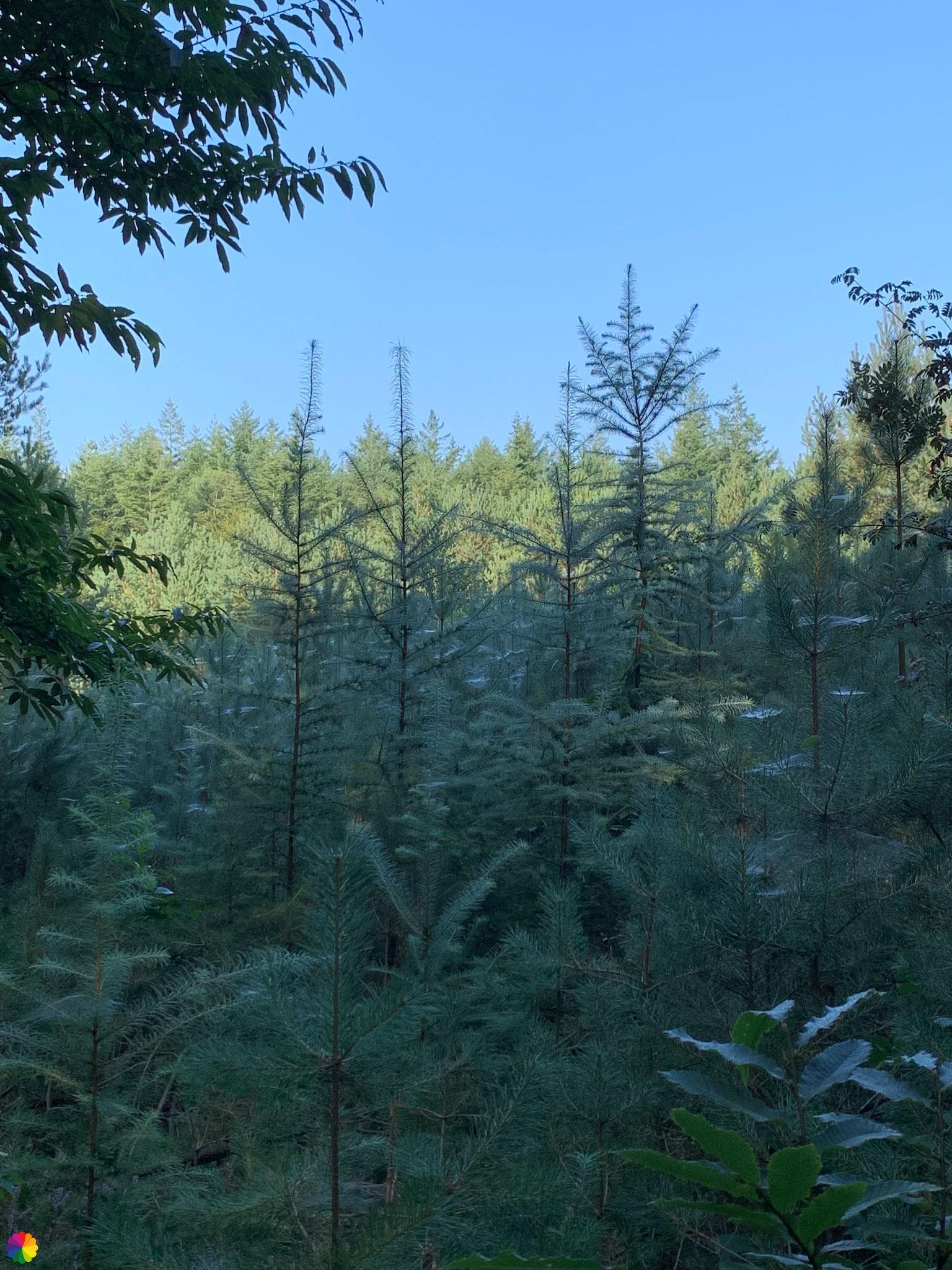

Heather patch in the Maartendijksche forest
Then at last I reach what I had come for: heather. I cross a road and walk straight through a field of heather. The heather is still in bloom, although it is past its prime. The heather patch is not very big, but I can take enough photos of it.
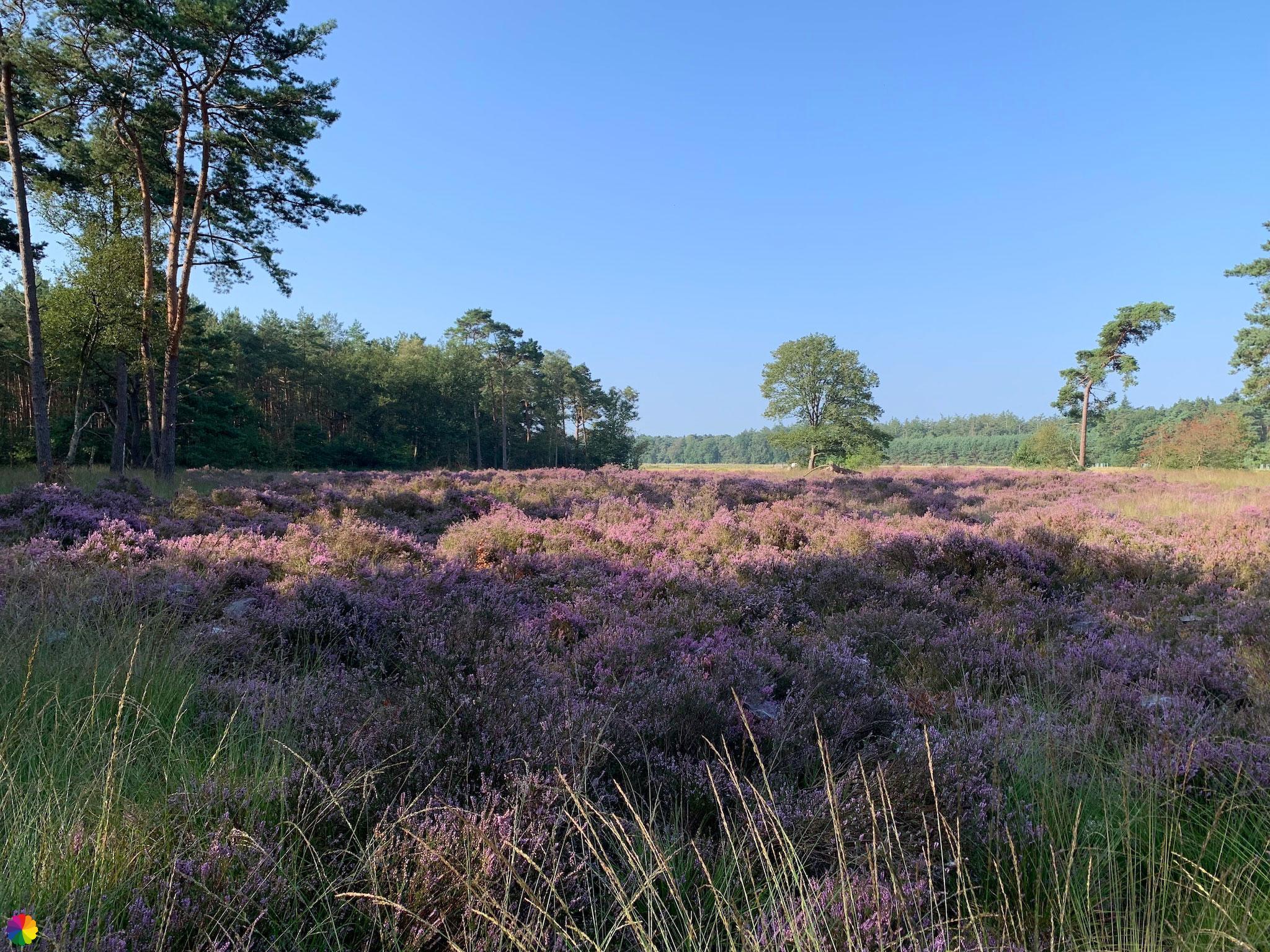

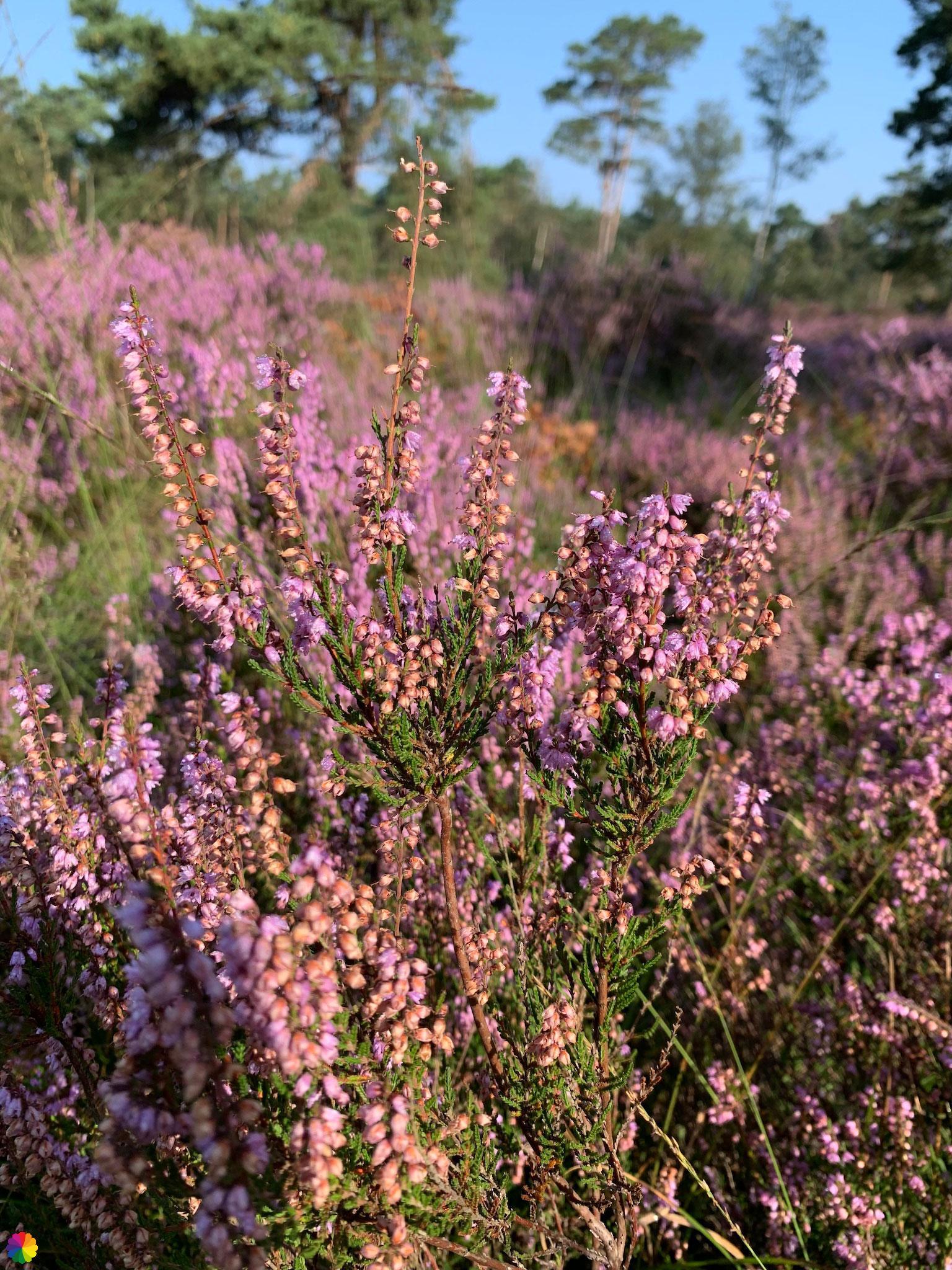



In the meantime, I have spent several hours in the forest but have not made much progress. My decision is clear: I will stop at Hollandsche Rading. I walk along the edge of the forest with a view over a field. I have barely taken 5 steps before I see something new: a butterfly this time, that actually stays put.
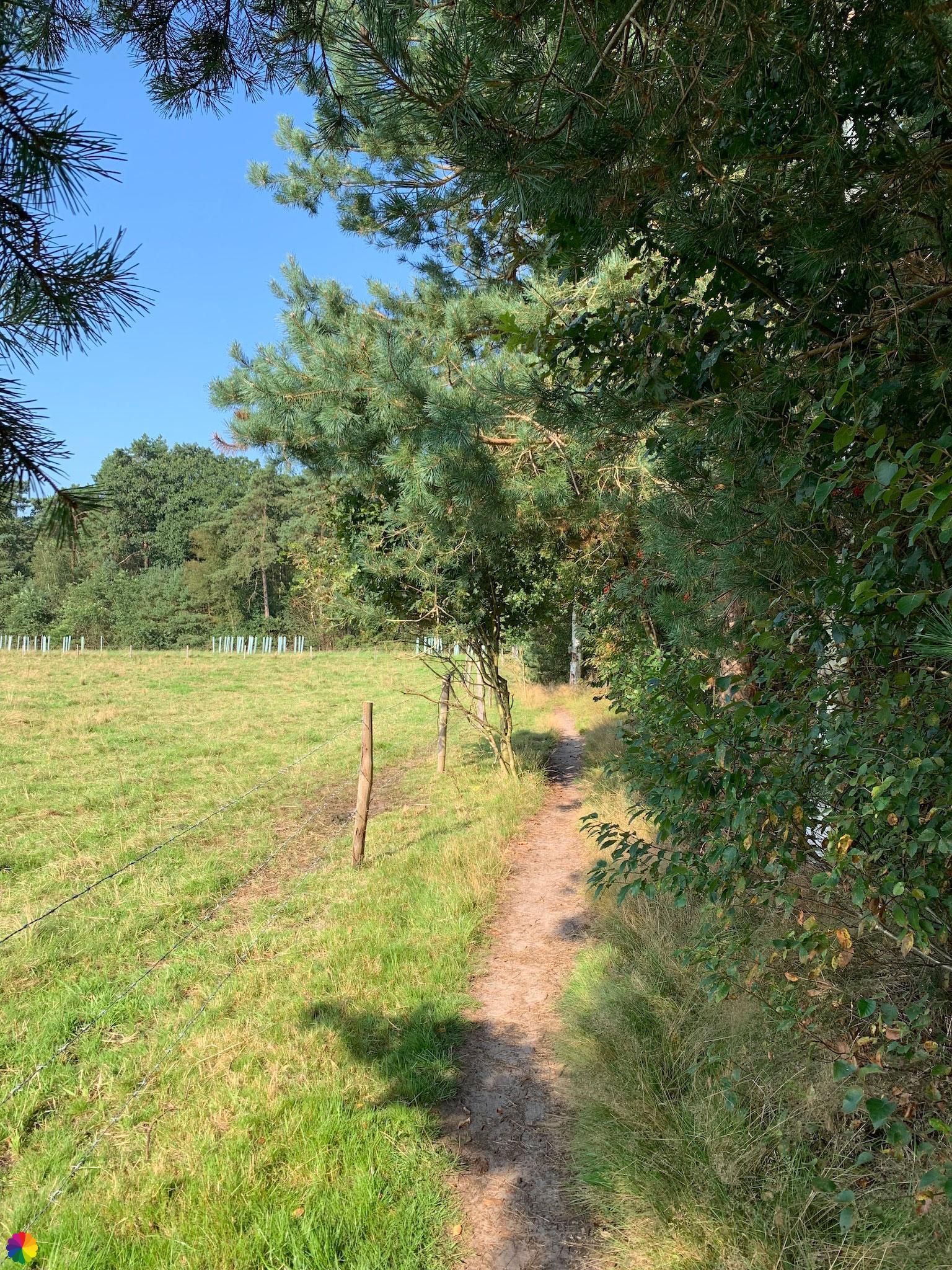

I turn right into a narrow forest path and I am in the Maartendijksche Forest. Hollandsche Rading is not far now. The narrow path makes way for a wider path. I notice something crawling on the ground. Is it another caterpillar? No, it’s a slug! I find it quite beautiful in its ugliness.
Other trail guide about the same region
Further on, the path is blocked by a fallen tree. I don’t have to climb, the path is big enough to go around it.
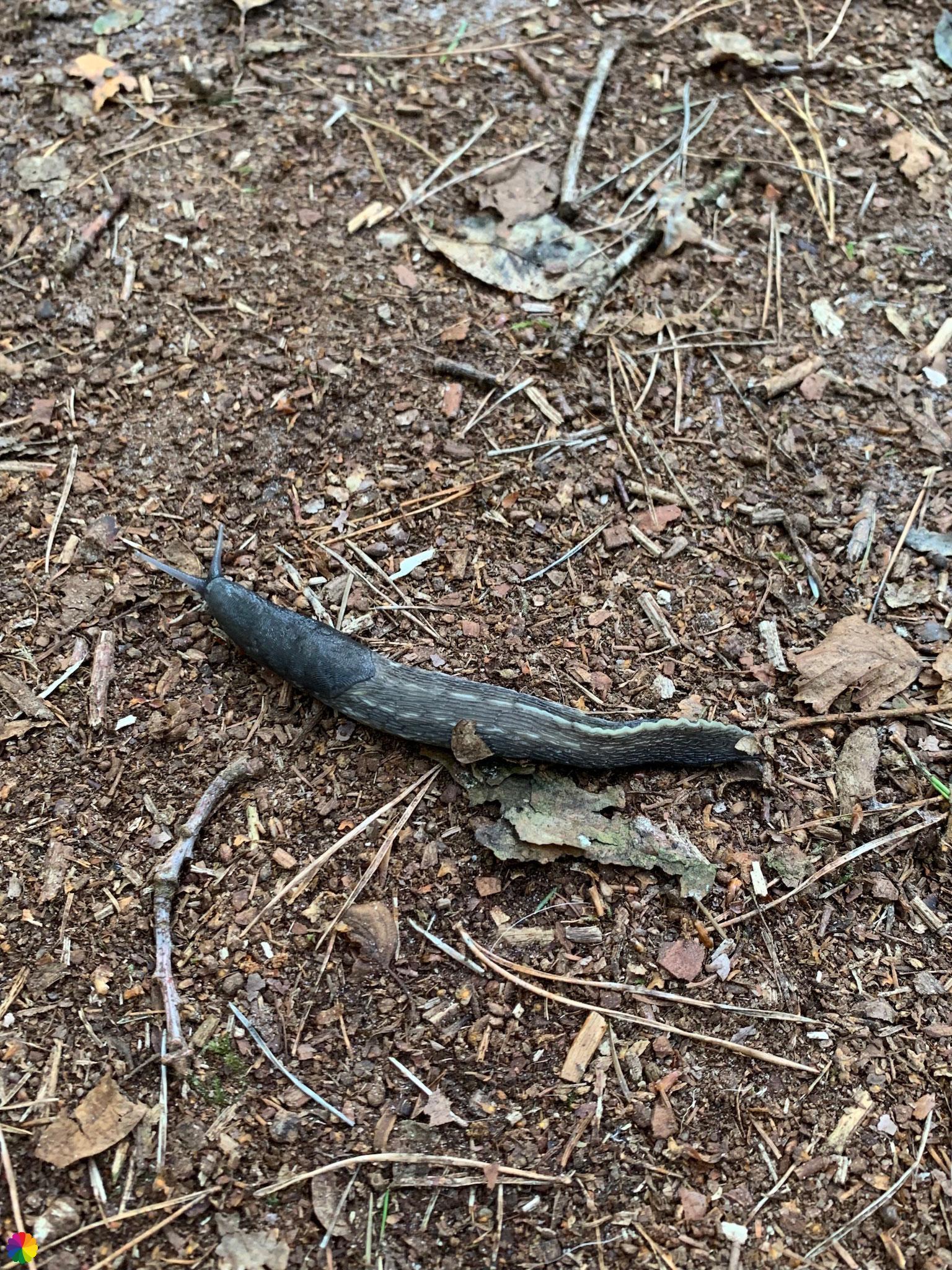

In the Maartendijksche Forest, I am not going the right way; I have lost the markings, of course. I have walked too far straight ahead somewhere and I do not know exactly which way to go back. There are many parallel paths here, so I just choose one. Eventually, I come to a cycle path in a bend and the ANWB-mushroom sign shows that I am near Hollandsche Rading. In the next bend, I see the red and white markings of the trail. This is where I should pick up the trail next time. But I have to pay attention, because long distance trail 3, the Marskramerpad (Merchant trail), also passes here somewhere.
Via an approach (or rather, an exit) track, I go in the direction of the Hollandsche Rading station. On the way, I come across a beautiful farm, a great spotted woodpecker and a border post of the provinces of North Holland and Utrecht. Even on the approach track, I am constantly standing still.
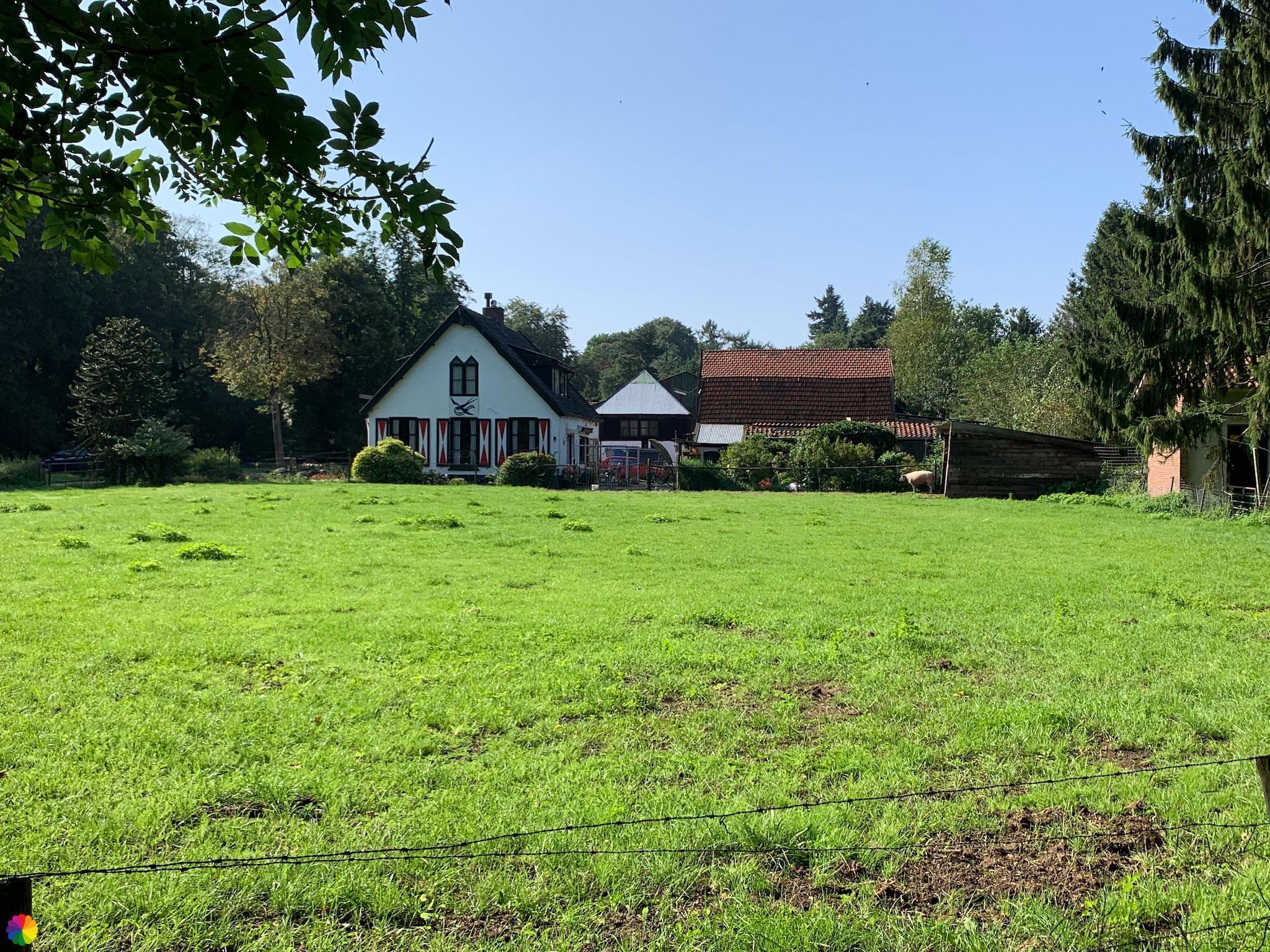
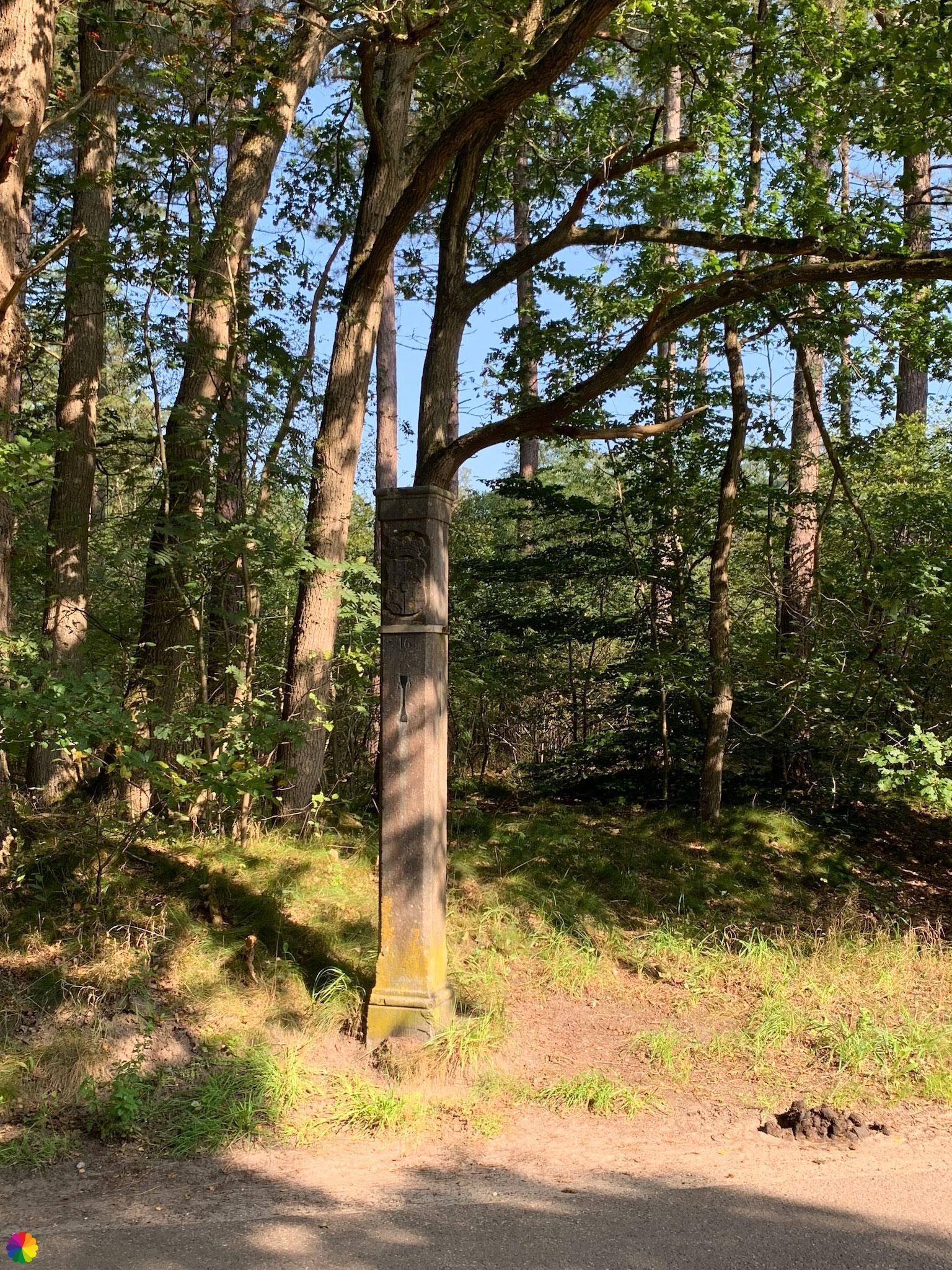
When I arrive at the station, I have to wait for the train. That is actually a good thing, because at the Perron Peet station café (now called Het Perron), they have delicious home-made cakes. I enjoy a delicious piece of lemon cake.
It is a short but powerful hike of about 11 km for me. I was amazed and amused by all the things I encountered in and around the forest, such as the caterpillar, mushrooms and heather. A true fairy tale, I might say. This one goes on my list of most beautiful hikes ever: a 5 star rating indeed!
More info:
Trail: Section 9 Long distance trail 2: Migration birds trailWhere: from Baarn to Hollandsche Rading, Utrecht, the Netherlands.
No. of km: +/- 11 km
Hiking date: 03 September 2021
Materials used in illustrations: coloured pencils for the map and watercolour paints for the other illustrations
Rating: ⭐⭐⭐⭐⭐
Pin this hike
Would you like to do this Wonderfull hike as well? Pin this hike on Pinterest to save for later!

More fairy tale like hikes
ColourFlux Studio makes use of so-called affiliate links. If you buy a product through the link in an advertisement, ColourFlux Studio receives a small amount. There are no additional costs for the buyer.
Back to Blog.



